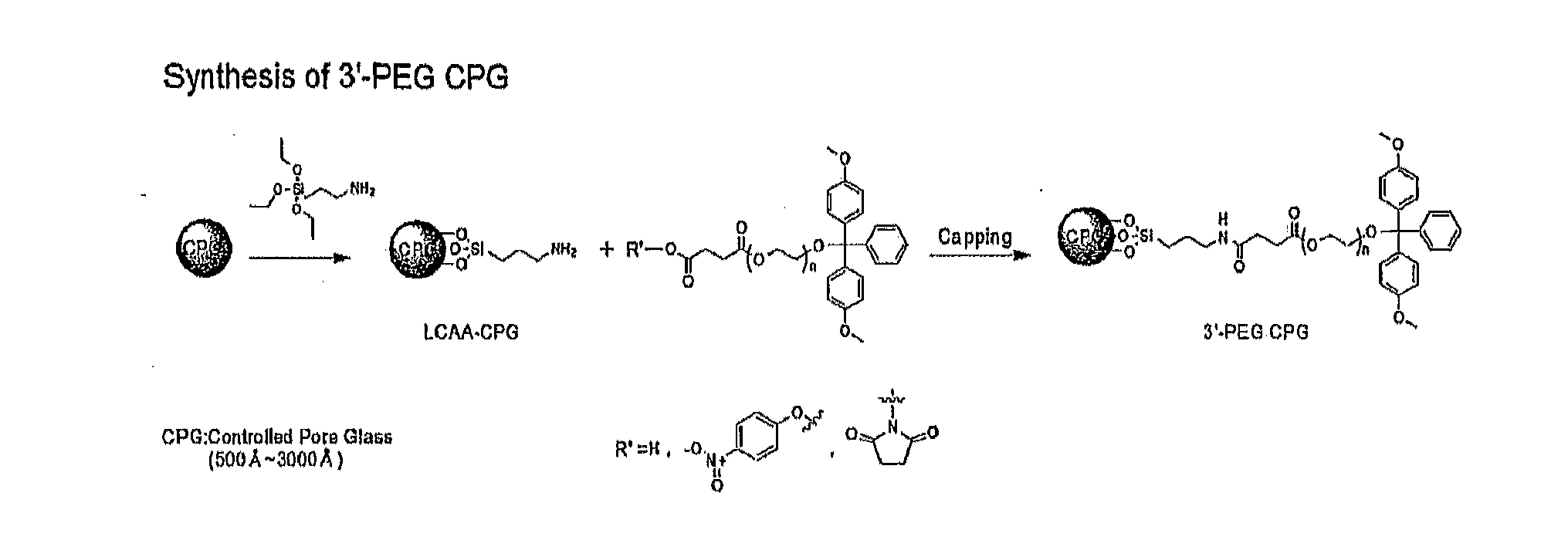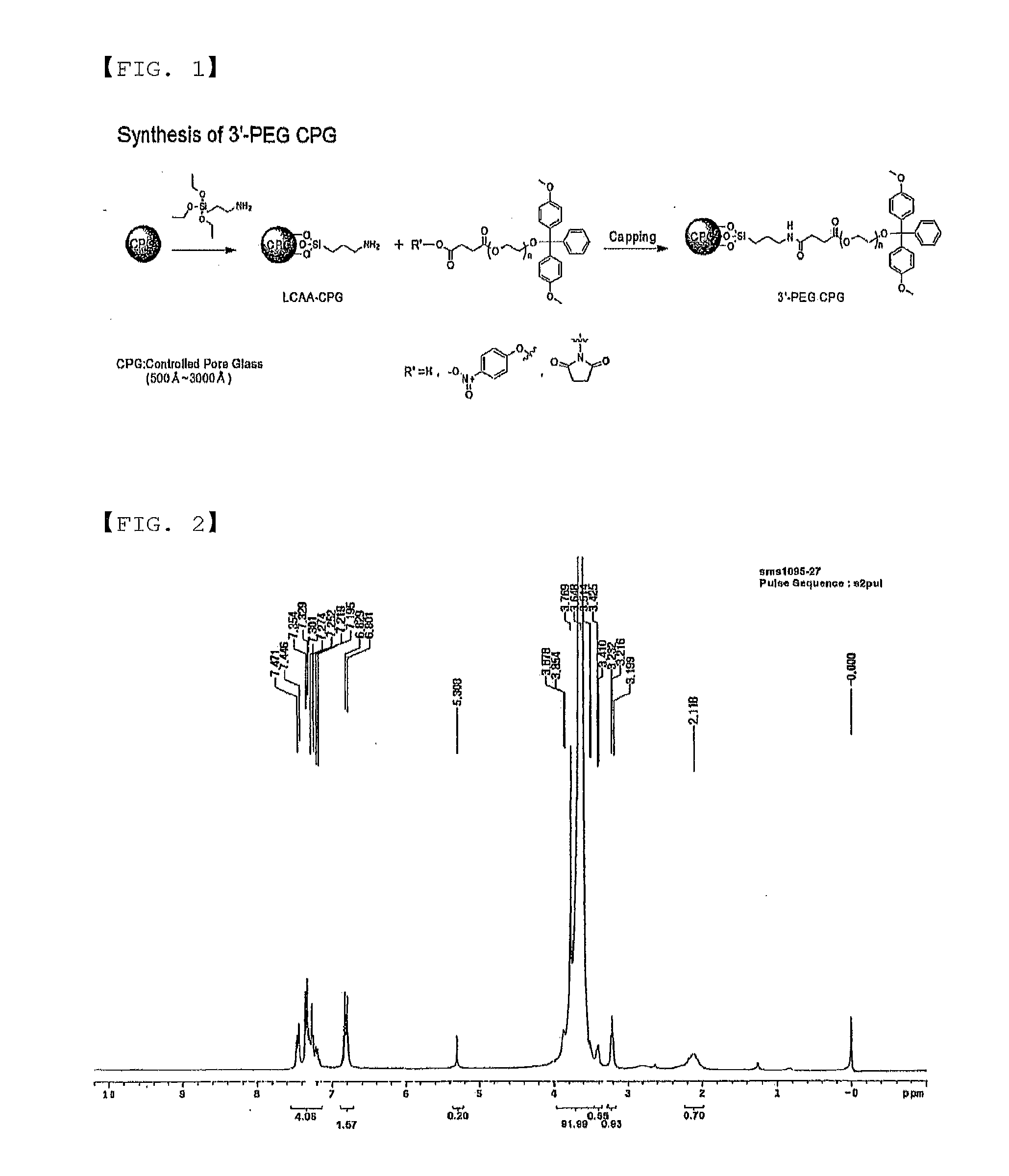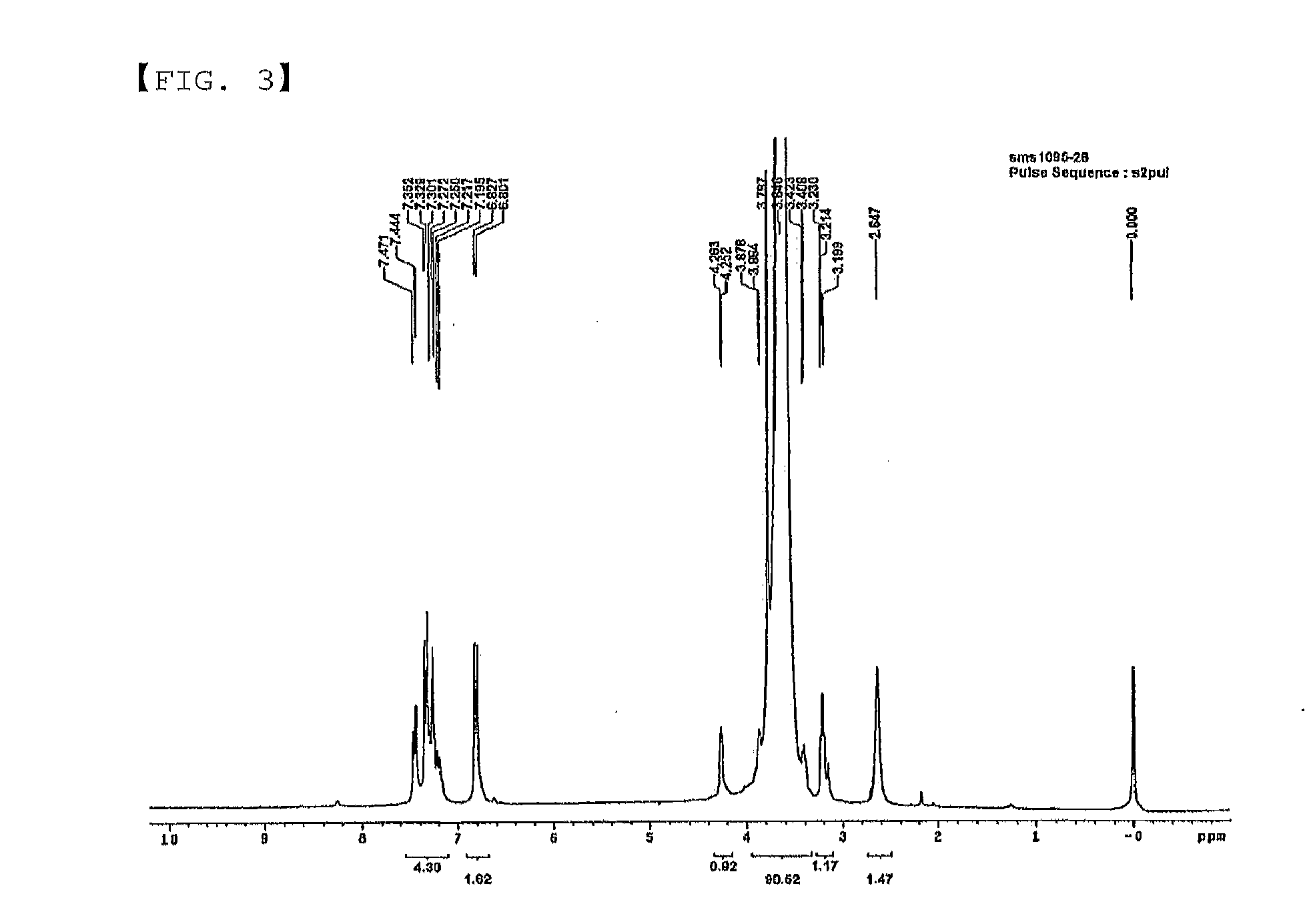Sirna conjugate and preparation method thereof
- Summary
- Abstract
- Description
- Claims
- Application Information
AI Technical Summary
Benefits of technology
Problems solved by technology
Method used
Image
Examples
example 1-1
Preparation of 3′-PEG Reagents (Compounds A, B, and C) for Binding with LCAA-CPG
[0104]In the subsequent example, 3′-PEG-CPG was prepared as shown in the following reaction formula.
example 1-1-1
Preparation of 2-[bis-(4-dimethoxytrityl)-poly(ethylene glycol)]
[0105]30 g (15 mmol) of polyethylene glycol 2000 (Alfa Aesar GmbH & Co. KG, Germany), as a starting material, was dissolved in 270 Ml of pyridine (Sigma Aldrich, USA), followed by addition of 3.55 Ml (25.5 mmol) of triethylamine (Sigma Aldrich, USA) and 7.12 g (21 mmol) of 4,4′-dimethoxy trityl chloride (GL biochem, China), and then the resultant substance was reacted at room temperature for 20 hours. The reactant mixture after completion of reaction was concentrated, and extracted with 450 Ml of ethyl acetate and 450 Ml of water, followed by vacuum evaporation and then vacuum drying, to obtain 2-[bis-(4-dimethoxytrityl)-poly(ethylene glycol) 23 g (66%).
[0106]1H NMR data of the compound are shown in FIG. 2.
[0107]1H NMR (CDCl3); δ 1.93 (br, 1, OH), 3.20-3.80 (m, 186, PEG, DMT-OCH3), 6.80-6.83 (m, 4, DMT), 7.19-7.47 (m, 9, DMT)
example 1-1-2
Preparation of succinic acid 2-[bis-(4-dimethoxytrityl)-poly(ethyleneglycol)] [Compound A]
[0108]3.9 g (1.672 mmol) of 2-[bis-(4-dimethoxytrityl)-poly(ethyleneglycol)] obtained in the example 1-1-1 was dissolved in 20 Ml of pyridine, and then cooled to 0° C. 351 mg (3.512 mmol) of succinic acid anhydride (Acros Organics, USA) and 42.5 mg (0.334 mmol) of DMAP (4-dimethylaminopyridine, Sigma Aldrich, USA) were added to the reactant substance, and stirred at 50° C. for 3 days, and then the reaction was finished. The reactant mixture after completion of reaction was vacuum-evaporated to obtain succinic acid 2-[bis-(4-dimethoxytrityl)-poly(ethylene glycol)] [Compound A] 3.65 g (90%, white solid).
[0109]1H NMR data of the compound are shown in FIG. 3.
[0110]1H NMR (CDCl3); δ 2.65 (m, 2, CH2CO), 3.20-3.88 (m, 186, PEG, DMT-OCH3), 4.25 (m, 2, CH2CO), 6.80-6.82 (m, 4, DMT), 7.19-7.47 (m, 9, DMT).
PUM
| Property | Measurement | Unit |
|---|---|---|
| Pore size | aaaaa | aaaaa |
| Composition | aaaaa | aaaaa |
| Diameter | aaaaa | aaaaa |
Abstract
Description
Claims
Application Information
 Login to View More
Login to View More - R&D
- Intellectual Property
- Life Sciences
- Materials
- Tech Scout
- Unparalleled Data Quality
- Higher Quality Content
- 60% Fewer Hallucinations
Browse by: Latest US Patents, China's latest patents, Technical Efficacy Thesaurus, Application Domain, Technology Topic, Popular Technical Reports.
© 2025 PatSnap. All rights reserved.Legal|Privacy policy|Modern Slavery Act Transparency Statement|Sitemap|About US| Contact US: help@patsnap.com



